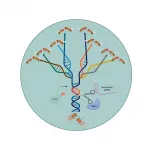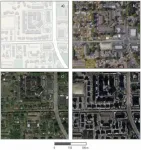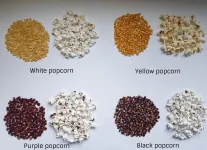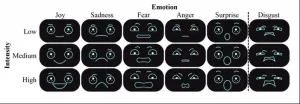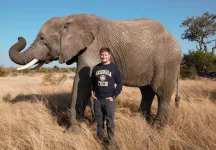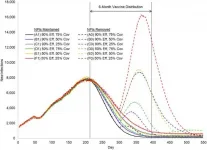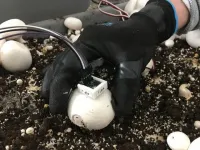(Press-News.org) A large group of iconic fossils widely believed to shed light on the origins of many of Earth's animals and the communities they lived in may be hiding a secret.
Scientists, led by two from the University of Portsmouth, UK, are the first to model how exceptionally well preserved fossils that record the largest and most intense burst of evolution ever seen could have been moved by mudflows.
The finding, published in Communications Earth & Environment, offers a cautionary note on how palaeontologists build a picture from the remains of the creatures they study.
Until now, it has been widely accepted the fossils buried in mudflows in the Burgess Shale in Canada that show the result of the Cambrian explosion 505 million years ago had all lived together but that's now in doubt.
The Cambrian explosion was responsible for kick-starting the huge diversity of animal life now seen on the planet.
Now, Dr Nic Minter and Dr Orla Bath Enright have found that some of the animals which became fossils could have remained well preserved even after being carried large distances, throwing doubt on the idea the creatures all lived together.
Dr Minter said: "This finding might surprise scientists or lead to them striking a more cautionary tone in how they interpret early marine ecosystems from half a billion years ago.
"It has been assumed that because the Burgess Shale fossils are so well preserved, they couldn't have been transported over large distances. However, this new research shows that the general type of flow responsible for the deposits in which they were buried does not cause further damage to deceased animals. This means the fossils found in individual layers of sediment, and assumed to represent animal communities, could actually have been living far apart in distance."
Drs Minter and Bath Enright, of the University of Portsmouth's School of the Environment, Geography and Geosciences, studied the Burgess Shale area of British Columbia, both on location in the field and with laboratory experiments.
The site is an area rich in fossils entombed in the deposits of mudflows and is one of the world's most important fossil sites, with more than 65,000 specimens already collected and, so far, more than 120 species counted.
The Burgess Shale area has been fundamental to scientists in understanding the origins of animal groups and the communities they lived among and has been closely studied multiple times.
The researchers, together with collaborators from the Universities of Southampton and Saskatchewan in Canada, used fieldwork to identify how the mudflows would have behaved, and then used flume tank laboratory tests to mimic the mudflows and are confident that the bodies of certain creatures could have been moved over tens of kilometres without damage, creating the illusion of animal communities which never existed.
The Burgess Shale was discovered in the early 1900s and led to the idea of the 'Cambrian explosion' of life, with the appearance of animals representing almost all the modern phyla, and inspiring copious research and discoveries.
Dr Bath Enright said: "Many would argue that it is fundamental, even ground zero for scientists in understanding the diversity of life."
It's not known precisely what caused the mudflows which buried and moved the animals which became fossilised, but the area was subject to multiple flows, causing well preserved fossils to be found at many different levels in the shale.
"We don't know over what kind of overall time frame these many flows happened, but we know each one produced an 'event bed' that we see today stacked up on top of one another. These flows could pick up animals from multiple places as they moved across the seafloor and then dropped them all together in one place," said Dr Bath Enright.
"When we see multiple species accumulated together it can give the illusion we are seeing a single community. But we argue that an individual 'event bed' could be the product of several communities of animals being picked up from multiple places by a mudflow and then deposited together to give what looks like a much more complicated single community of animals.
"Palaeontologists need to appreciate the nature of the sediments that fossils are preserved within and what the implications of that are. We could be overestimating the complexity of early marine animal communities and therefore the patterns and drivers of evolution that have led to our present day diversity and complexity."
The researchers hope to do further study to investigate whether differences in the species that are present in other fossil sites are due to evolutionary changes through time or the nature of the flows and the effects of transport and preservation of the fossils.
INFORMATION:
CRISPR-based technologies offer enormous potential to benefit human health and safety, from disease eradication to fortified food supplies. As one example, CRISPR-based gene drives, which are engineered to spread specific traits through targeted populations, are being developed to stop the transmission of devastating diseases such as malaria and dengue fever.
But many scientists and ethicists have raised concerns over the unchecked spread of gene drives. Once deployed in the wild, how can scientists prevent gene drives from uncontrollably spreading across populations ...
CHICAGO -- Women who experience acute aortic dissection--a spontaneous and catastrophic tear in one of the body's main arteries--not only are older and have more advanced disease than men when they seek medical care, but they also are more likely to die, according to research published online today in The Annals of Thoracic Surgery.
"Data over the course of the last few decades demonstrate differences in both presentation and outcomes between males and females who have acute aortic dissection, with greater mortality among females," said Thomas G. Gleason, MD, from Brigham and Women's Hospital in Boston, Massachusetts. "This study underscores ...
Can you trust the map on your smartphone, or the satellite image on your computer screen?
So far, yes, but it may only be a matter of time until the growing problem of "deep fakes" converges with geographical information science (GIS). Researchers such as Associate Professor of Geography Chengbin Deng are doing what they can to get ahead of the problem.
Deng and four colleagues -- Bo Zhao and Yifan Sun at the University of Washington, and Shaozeng Zhang and Chunxue Xu at Oregon State University -- co-authored a recent article in Cartography and Geographic Information Science that explores the problem. In "Deep ...
Popcorn. What would movies and sporting events without this salty, buttery snack? America's love for this snack goes beyond these events. We consume 15 billion quarts of popped popcorn each year.
When it comes to popcorn, consumers want a seed-to-snack treat that leaves more snacks than seeds when popped. This means when they pop the corn, there shouldn't be many unpopped kernels left in the bowl.
Maria Fernanda Maioli set out to determine the properties affecting popping expansion in popcorn. The team's research was recently published in Agronomy Journal, a publication of the American Society of Agronomy.
"The way kernels expand is a basic, ...
BEER-SHEVA, Israel...June 2, 2021 - As drones become more ubiquitous in public spaces, researchers at Ben-Gurion University of the Negev (BGU) have conducted the first studies examining how people respond to various emotional facial expressions depicted on a drone, with the goal of fostering greater social acceptance of these flying robots.
The research, which was presented recently at the virtual ACM Conference on Human Factors in Computing Systems, reveals how people react to common facial expressions superimposed on drones.
"There is a lack of research on how drones are perceived and understood by humans, which is vastly different than ground robots." says Prof. Jessica Cauchard together with Viviane Herdel of BGU's Magic Lab, in the BGU Department of Industrial ...
New research from the Georgia Institute of Technology finds that elephants dilate their nostrils in order to create more space in their trunks, allowing them to store up to nine liters of water. They can also suck up three liters per second -- a speed 50 times faster than a human sneeze (150 meters per second/330 mph).
The Georgia Tech College of Engineering study sought to better understand the physics of how elephants use their trunks to move and manipulate air, water, food and other objects. They also sought to learn if the mechanics could inspire the creation of more efficient robots that use air motion to hold and move things.
While octopus use jets of water to move and archer fish shoot water above the surface to catch insects, the Georgia Tech researchers found that elephants ...
Boulder, Colo., USA: Article topics include Zealandia, Earth's newly recognized continent; the topography of Scandinavia; an interfacial energy penalty; major disruptions in North Atlantic circulation; the Great Bahama Bank; Pityusa Patera, Mars; the end-Permian extinction; and Tongariro and Ruapehu volcanoes, New Zealand. These Geology articles are online at https://geology.geoscienceworld.org/content/early/recent.
Mass balance controls on sediment scour and bedrock erosion in waterfall plunge pools
Joel S. Scheingross; Michael P. Lamb
Abstract: Waterfall plunge pools experience cycles of sediment aggradation and scour that modulate ...
CHAPEL HILL, NC - Research published by JAMA Network Open shows how non-pharmaceutical interventions (NPIs) like mask wearing and physical distancing can help prevent spikes in COVID-19 cases as populations continue to get vaccinated. The study, led by Mehul Patel, PhD, a clinical and population health researcher in the department of Emergency Medicine at the UNC School of Medicine, focuses on the state of North Carolina. Similar modeling studies have been used in different states, and can serve as guidance to leaders as they make decisions to relax restrictions and safety protocols.
"The computer simulation modeling allows us to look at multiple factors that play a role in decreasing the spread of COVID-19 as vaccines are ...
PROVIDENCE, R.I. [Brown University] -- By delivering small electrical pulses directly to the brain, deep brain stimulation (DBS) can ease tremors associated with Parkinson's disease or help relieve chronic pain. The technique works well for many patients, but researchers would like to make DBS devices that are a little smarter by adding the capability to sense activity in the brain and adapt stimulation accordingly.
Now, a new algorithm developed by Brown University bioengineers could be an important step toward such adaptive DBS. The algorithm removes a key hurdle that makes it difficult for DBS systems to sense brain signals while simultaneously delivering stimulation.
"We know that there are electrical signals ...
Researchers in Penn State's College of Agricultural Sciences have developed a robotic mechanism for mushroom picking and trimming and demonstrated its effectiveness for the automated harvesting of button mushrooms.
In a new study, the prototype, which is designed to be integrated with a machine vision system, showed that it is capable of both picking and trimming mushrooms growing in a shelf system.
The research is consequential, according to lead author Long He, assistant professor of agricultural and biological engineering, because the mushroom industry has been facing labor shortages and rising labor costs. Mechanical or robotic picking can help alleviate those problems.
"The mushroom industry in Pennsylvania is producing about two-thirds of the mushrooms ...

